If 91% of plastic is not recycled, why not stop buying plastic altogether? Plastic water bottles, in particular, have some harmful side effects on the planet and end up costing so much more than their eco-friendly alternatives. That’s why in today’s post I share 9 tips on how to stop buying water bottles as well as alternatives to bottled water at home.
SAVE THIS POST TO READ IT LATER!
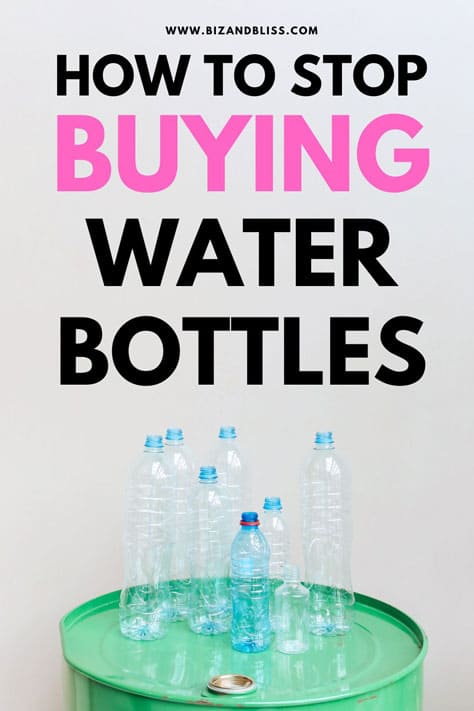
DISCLAIMER
This post may contain affiliate links, which means I’ll receive a commission if you purchase through my links, at NO extra cost to you. Read my Disclaimer for more information. Hope you find this post useful!
How To Stop Buying Water Bottles: Protect The Planet And Your Pocket!
Do you know how many plastic water bottles Americans throw away each year?
*Dramatic drum sound effect*:
No more and no less than 35 BILLION water bottles and counting.
You can stop this.
Protect the planet and save money by applying the following tips on how to stop buying water bottles for good!:
1. Drink Tap Water
2. Choose Reusable Water Bottles
3. Recycle Current Plastic Water Bottles
4. Use A Filter
5. Prefer Eco-Friendly Packaging
6. Drink From Free Drinking Fountains
7. Boil Water
8. Use Apps To Access Free Water
9. Opt For Water Purification Tablets Or A Portable Water Sterilizer
1. Drink Tap Water
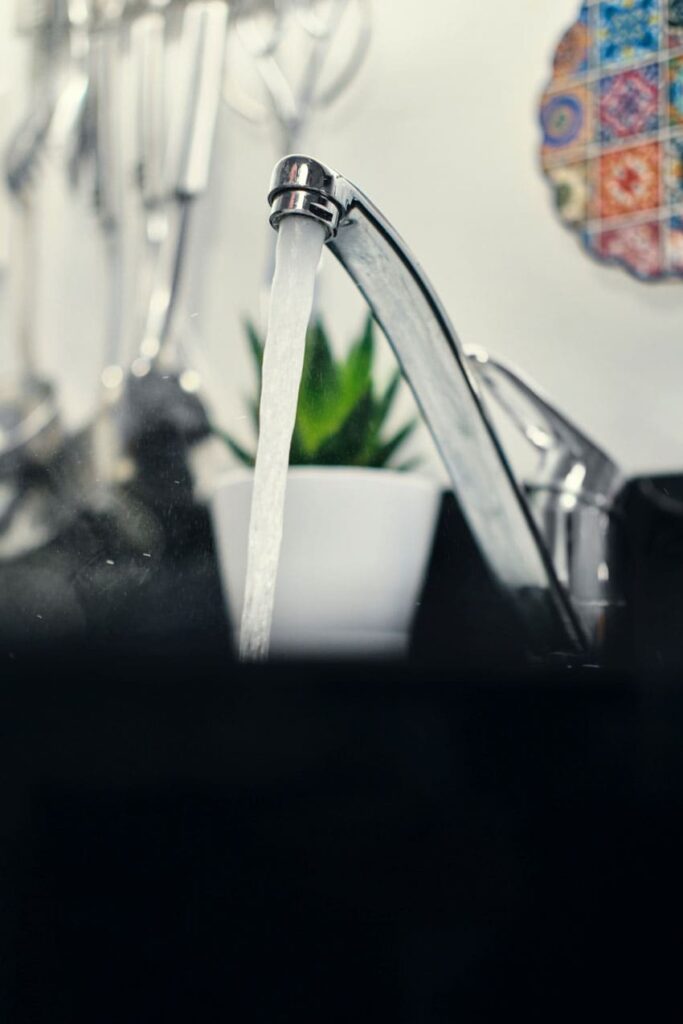
For people with access to drinkable tap water at their homes, this is a no-brainer.
Drinking tap water produces no waste on your side and, apart from the water bill, costs nothing compared to buying water bottles regularly.
Additionally, it’s safer! This is because it is tested more often than bottled.
During the disinfection process, it is filtered to remove pathogens and they even add fluoride to it for tooth decay prevention.
In contrast, bottled water does not go through these processes and it is more likely to contain microplastics and harmful chemicals.
2. Choose Reusable Water Bottles
Buying my reusable water bottle was life-changing for me; I take it with me wherever I go!
No matter if you are at your office, at an event, or just walking your dog in the park, you can always stay hydrated while avoiding buying water bottles all the time.
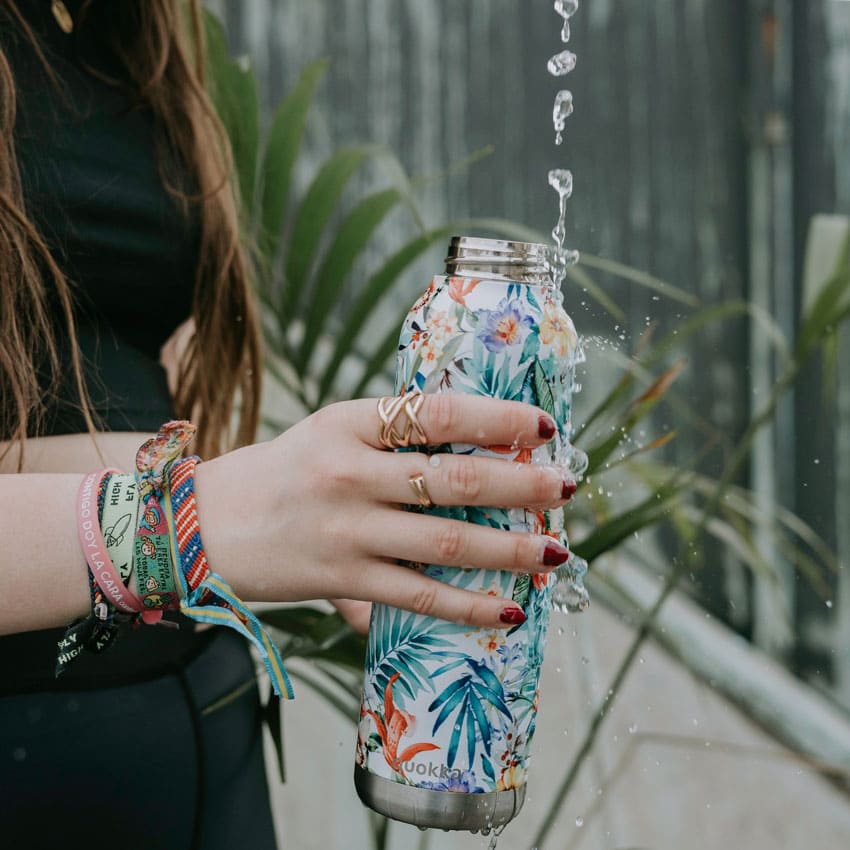
There are different reusable water bottles.
You can choose among the following materials:
- Stainless steel
- Plant-based plastic
- Glass
- Aluminum
- Cardboard
The most popular reusable water bottles are made of stainless steel or glass and are infinitely recyclable.
3. Recycle Current Plastic Water Bottles
The most healthy thing to do is to dispose of plastic water bottles once they are used, but, if you want to use them a few times more, it won’t hurt.
So, if you don’t want to toss them out, try reusing them by filling them with tap water.
However, make sure the water bottles are not damaged in any way and wash them thoroughly each time after use.
You can also recycle them by converting them into vases, piggy banks, pencil containers, and planters.
On Pinterest, there are lots of DIY crafts with plastic water bottles to get inspired!
4. Use A Filter
If you are feeling a bit suspicious about tap water and want to guarantee that it is free of chlorine, mercury, lead, and arsenic, consider getting a water filter.
There are different types of filters that suit diverse budgets and lifestyles.
The most popular formats are countertop, faucet-mounted, and under-the-sink water filters.
Just make sure the one you choose is certified by the National Sanitation Foundation (NSF).
In my case, I use this water filter pitcher for my meals and I’m in love!
Honestly, I didn’t know that this type of water filter even existed and I use it daily to replace 1800 single-use plastic water bottles a year.
It purifies water through activated carbon technology and it even has a ‘SmartLight’ indicator that tells you when to replace its filter.
5. Prefer Eco-Friendly Packaging
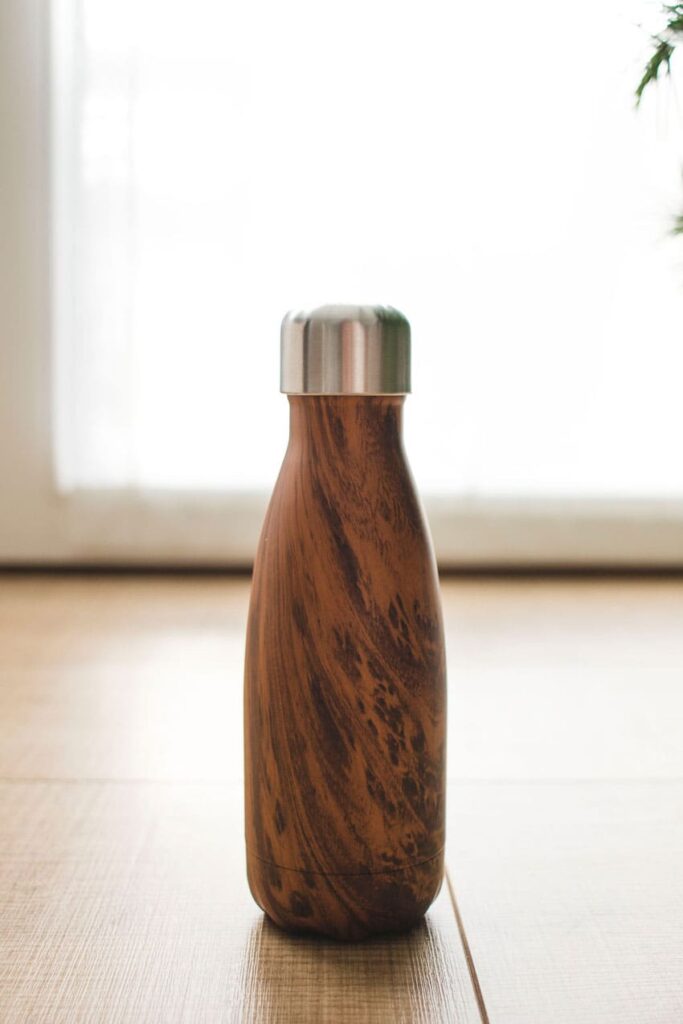
If you are a busy bee like me, carrying a water bottle with you wherever you go is a must.
But there’s a little change you can make in your buying behavior and that is choosing eco-friendly water bottles to curb your plastic use.
In fact, there are a lot of options out there for environmentally-conscious buyers, the most popular materials being stainless steel, compostable cardboard, and borosilicate glass.
Being incredibly durable, 100% recyclable, safe, and convenient, these materials are the best alternative to plastic water bottles.
With so many pollutants contaminating our environment, making this zero-waste swap contributes to a greener future and helps you save hundreds of dollars too!
6. Drink From Free Drinking Fountains
Drinking fountains have been around in strategic public spaces such as parks and walking trails since the mid-1800s.
Whether you are on the go running errands or doing your running session, having access to free tap water on the streets is a fantastic way to stop buying water bottles.
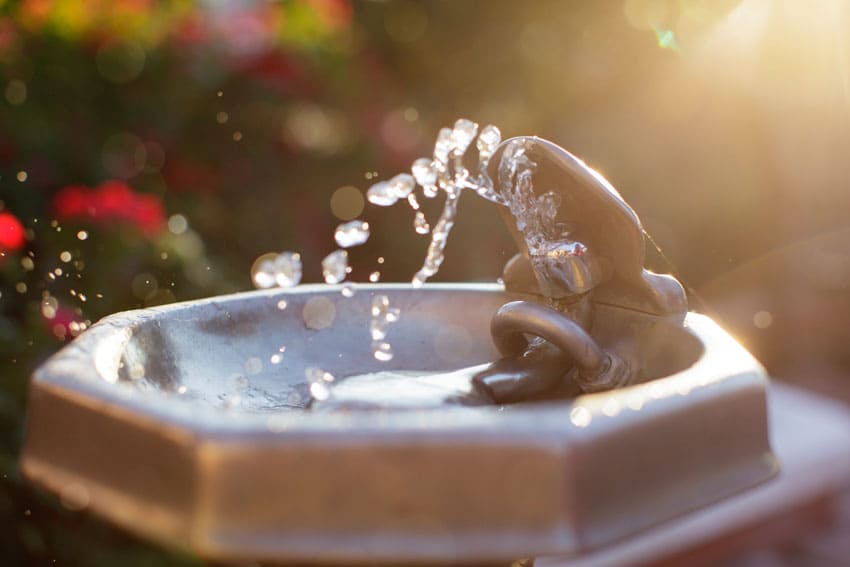
You just stop by, get hydrated, and produce zero waste in the whole process.
Free drinking fountains and bottle refill stations are strictly regulated by the US government, so the possibility of getting a disease from a drinking fountain is low.
Just make sure to use hand sanitizer after touching the push button, unless it is a touchless, sensor-activated station.
7. Boil Water
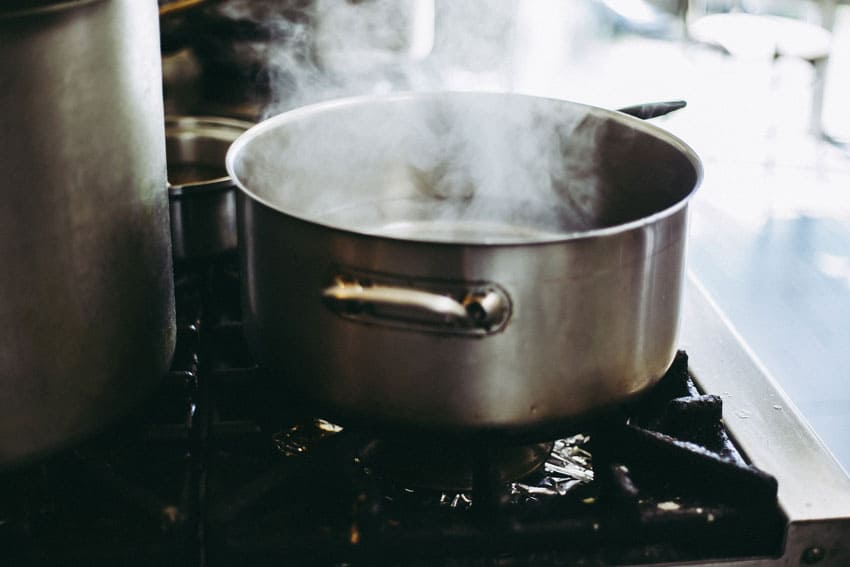
If you are at home and want an easy and cheap way of getting drinkable water, fill a pan with water, bring it to a full rolling boil for 3 minutes, and let it cool.
Then, transfer it to clean, airtight containers for future use in your daily activities.
Boiling water will kill bacteria and germs, making it safe to drink.
If you want to add more taste to it, you can add to it a pinch of salt and aerate it by pouring the water back and forth between two containers.
This method is used for emergencies like natural disasters or for cases when there are concerns that your local water supply could be contaminated.
8. Use Apps To Access Free Water
Apps like We Tap, Refill My Bottle, Tap, and Water Map come in handy to find the closest spots to drink free water or refill your water bottle.
The idea behind these apps is not only to raise awareness but also to improve access to safe public water to avoid plastic waste and promote healthy hydration habits.
Plus, thirsty passers-by can save money by refilling their water bottles and eliminating the need to buy water at the store.
Apps like Tap even give stickers to cafes and hotels to welcome locals to come in and ask for free tap water.
9. Opt For Water Purification Tablets Or A Portable Water Sterilizer
If you like to go camping or hiking and find yourself in a situation of not having access to drinkable water, water purification tablets or potable sterilizers can save the day.
In the case of purification tablets, this brand in particular is a fast and cheap way of disinfecting water without leaving an iodine taste like other tablets.
You simply add two tablets of these tablets to one liter of water, wait for 5 minutes, shake the container, and then wait for another 30 minutes to drink the water.
As for portable UV water sanitizers, this brand offers a reusable device for up to 8,000 liters of water that destroys 99,99% of harmful bacteria, germs, and protozoa, without using chemicals and altering the taste of the PH of the liquid used.
Here is exactly how it is used.
Why You Should Stop Buying Plastic Water Bottles
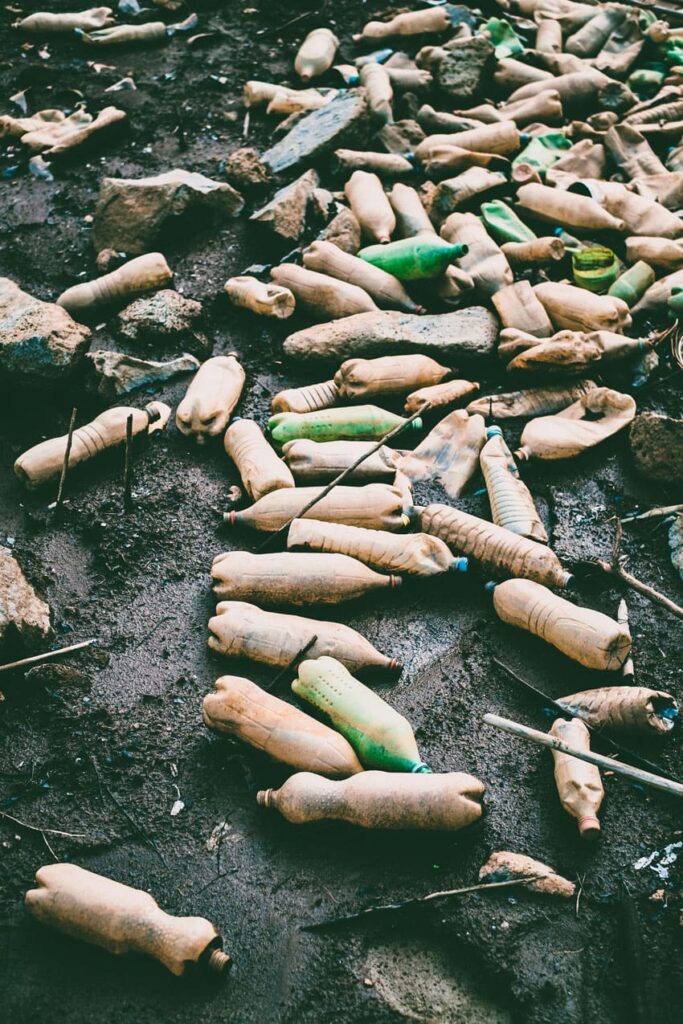
There are several reasons why you shouldn’t buy bottled water, most of them being associated with its harmful consequences for the environment and human health.
Before buying bottled water, take into consideration the following facts and evaluate the possibility of opting for more sustainable (and cheaper) alternatives.
They Pollute The Environment

It’s nice to think that our plastic bottles will get recycled, but the reality is that our waste ends up in landfills, with the rest of the trash.
And the worst part is that, unlike food, plastic takes hundreds of years to degrade and break down into fine powder.
Being one of the most common types of debris, water bottle particles end up being consumed by marine creatures, which eventually affects human nutrition and health.
It’s a no-win for everybody.
They Harm Biodiversity
Water bottles pose a high threat to sea and land wildlife.
As for sea creatures, they mistake microplastic for food and end up consuming plastic on an everyday basis.
The plastic consumed makes them feel full, which affects their capability to eat and, eventually, they die from starvation.
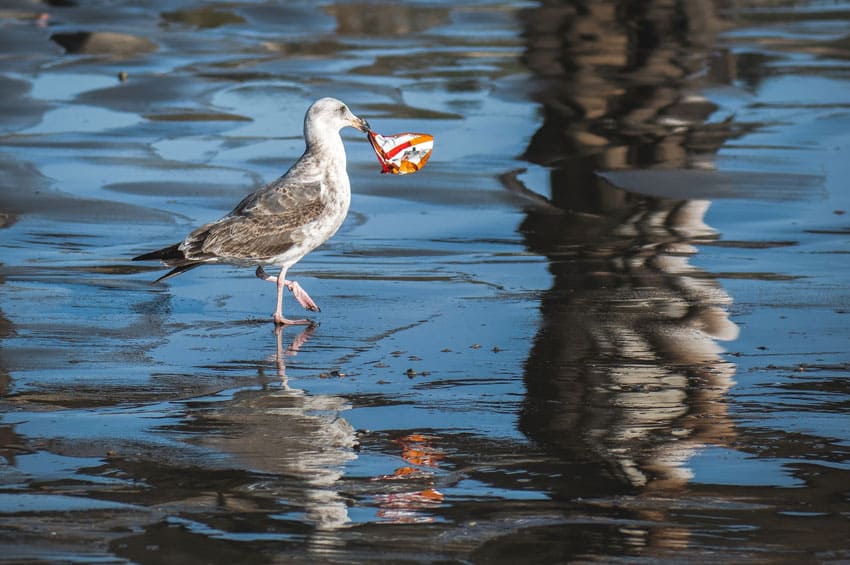
Apart from causing cell damage, microplastics also pierce internal organs, which is another cause of premature death among sea creatures.
As for land animals, plastic causes intestinal blockage and this in turn generates fatal organ failure.
Soil fauna is no stranger to plastic pollution either: plastic leaches into the soil and water sources, killing the tiniest creatures of the food chain, like larvae, mites, and worms.
They Take Years To Degrade
Plastic water bottles take between 450 and 1000 years to degrade.
Yes, you read that right!
And the worst part is that they do not decompose (i.e. they do not change chemically until disappearing), but degrade until they break up into smaller parts, called microplastics.
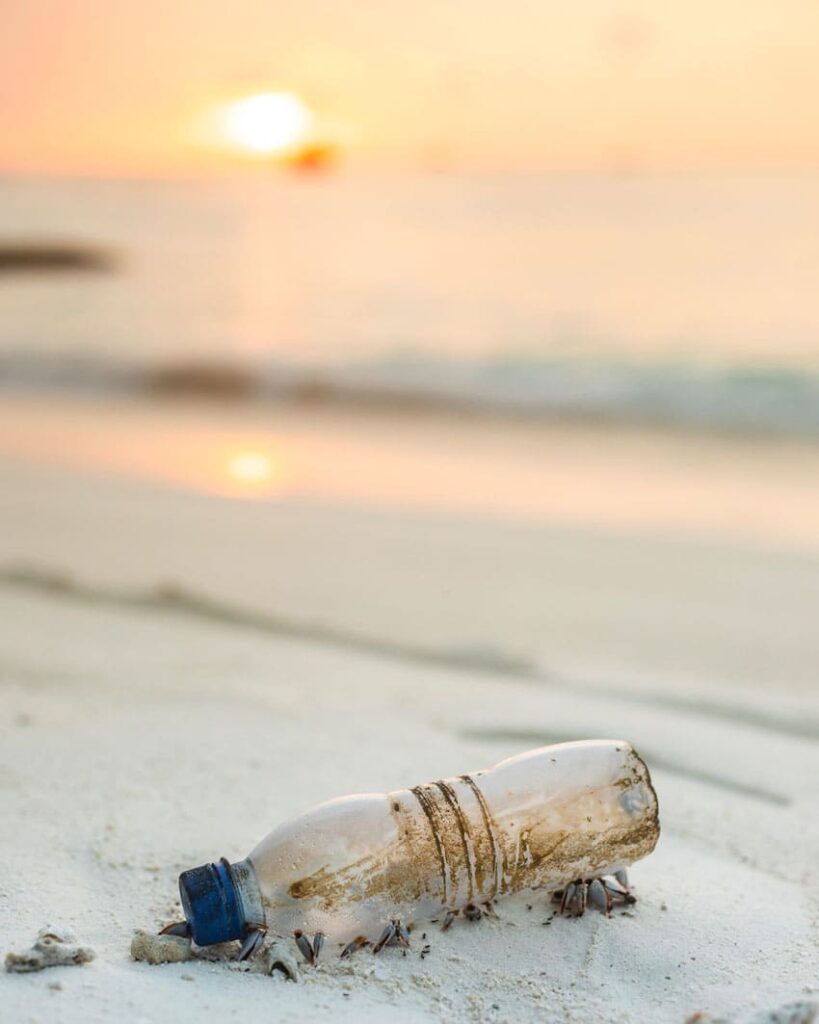
This scenario just gets more critical considering that water bottles are meant to be used only once, which accelerates plastic pollution.
This is another reason to stop buying single-use plastic water bottles and start going for fully-recyclable ones.
They Use Lots Of Resources

In order to manufacture plastic water bottles, a high amount of resources are used.
Consider this: one water bottle requires a quarter of a liter of oil and three liters of water to be made.
That’s a lot for a single-use product.
And we are not even taking into account the energy used for its transportation and distribution.
The problem here is that fossil fuels are non-renewable energy and cause serious health problems due to air pollution.
That’s why there’s a pressing need to turn to more sustainable ways of bottling water.
They Are Expensive
Bottled water costs you 2,000 times more than tap water.
Don’t you see how much money could you save if you turn to more sustainable ways of staying hydrated?
The funny thing about this is that you are not paying for the water in itself, but for the packaging, the transportation, and the advertising costs of producing the water bottle.
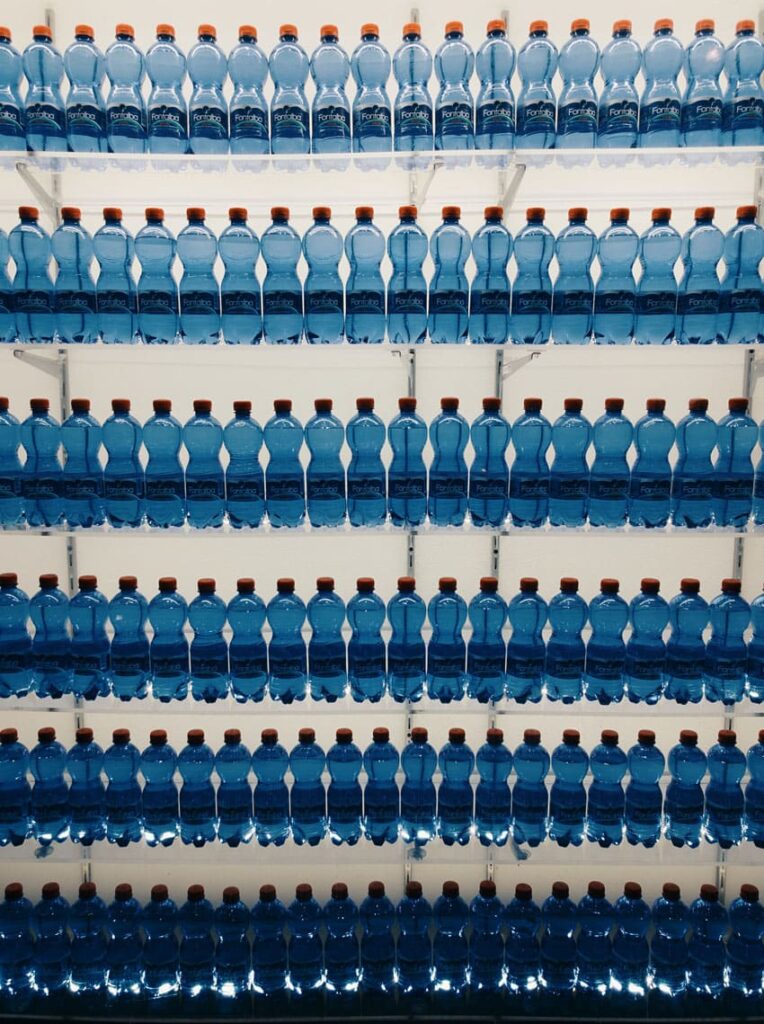
Then, why not turn to filtered tap water?
It’s better to rely on cheaper and safer options (for you and the planet) than spend our money on products that at the end of the day cause more harm than good.
They Are Not Better Than Tap Water
Lots of water bottle brands claim that their products are better for human health due to the addition of minerals and more treatment than tap water.
However, bottled water has been proven to contain bacteria, heavy metals, toluene, and other harmful organic and inorganic contaminants.
Another myth surrounding bottled water is that it’s more regulated than tap water.
In fact, bottled water brands don’t use certified laboratories to test their products and are not required to disclose information about the water quality on the product labels.
Next time you think about buying bottled water, remember that it starts up as plain tap water.
They Are Single-Use
The sad part of the whole bottled water reality, apart from its dramatic environmental consequences, is the fact that they are designed for single use only.
Just imagine how much money is spent on this product and how much waste is generated daily.
In the US alone, 60 million plastic water bottles are thrown away each day.
It’s crazy.
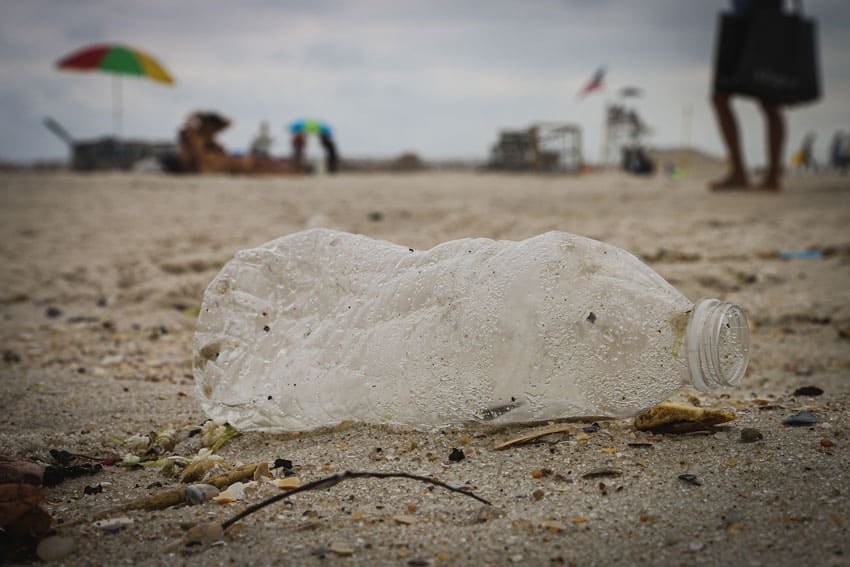
Instead of using plastic bottled water daily, consider getting a recyclable water bottle (for example, a stainless steel bottle)
You use only ONE for a lifespan of 10 years.
It is worth it.
They Are Toxic
Apart from containing bacteria and other organic contaminants, plastic water bottles are made with carcinogenic substances, like polyethylene terephthalate (PET), high-density polyethylene (HDPE), and bisphenol A (BPA).
PET plastic, in particular, leaches phthalates into the water, which are endocrine disruptors.
This means that it causes damage to your hormone system, eventually increasing your probability of developing illnesses like diabetes, cancer, and reproductive problems.
Of course, the more exposure you have to these plastics, the greater the risk of suffering health issues.
Wrapping Up: How To Stop Buying Water Bottles
Phew! That was a lot of information to digest but now you know exactly how to stop buying plastic water bottles!
Not only we went through the steps to avoid spending money on this product but also discovered the reasons to further confirm the decision to opt for cheaper and more sustainable alternatives.
If you were wondering how to reduce plastic bottles at home or how to use less plastic in daily life, you can always return to this blog post to find out!
A glass water bottle or stainless steel water bottle is way better than their plastic counterparts and for good reason.
There is always a cheap alternative to plastic bottles, you just need to get curious and search the market!

- Grandma’s Frugal Living Tips From The Great Depression You Wish You Knew Before
- Does Meal Prepping Save Money? | 14 Tips To Save Hundreds
DON’T FORGET TO SAVE AND SHARE THIS POST!


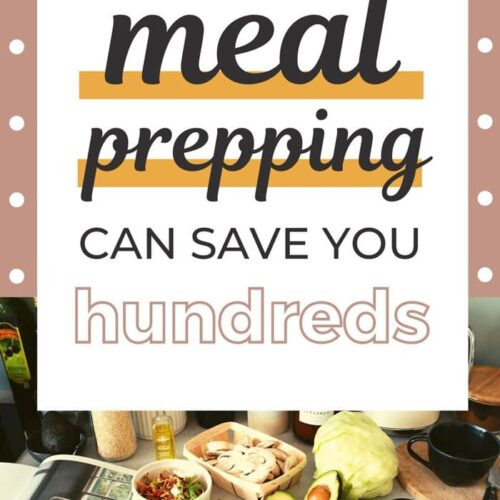

Leave a Reply